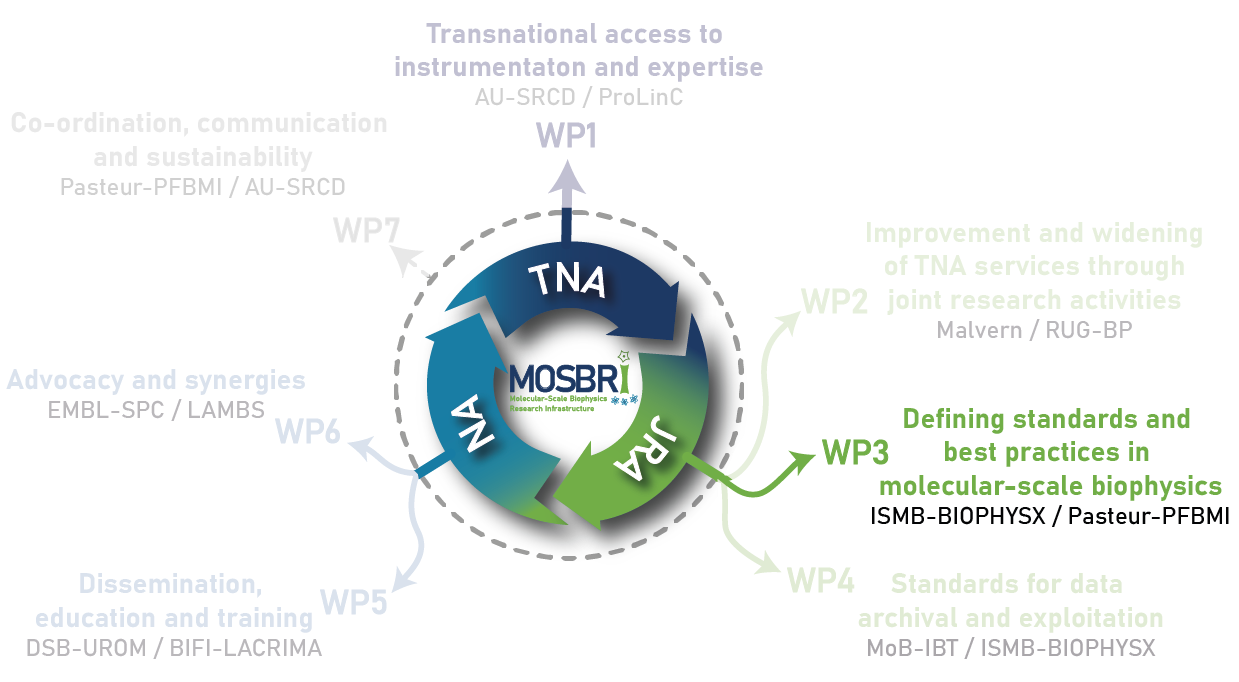WP3: JRA – Defining standards & best practices
- Leader: Mark Williams (ISMB-BIOPHYSX, London, UK)
- Co-leader: Patrick England (Pasteur-PFBMI, Paris, FR)
The overall aim of this joint research activity is to define and validate standards and best practices in quantitative analysis of biomolecular behaviour to be implemented by the MOSBRI partners and the wider biophysical and scientific community.
Three specific objectives are:
- To develop a ‘Driving Licence’ scheme for molecular biophysics instrument handling and sample analysis in order to ensure consistent, high quality training of TNA users and consortium staff and to record (accredit) competencies
Through training of users during TNA and training events organized under WP5, the network will contribute to the development of skills of a large number of researchers (in particular students and early career investigators), providing benefit to both academia and industry. In order that such training is, and is recognized as, effective in enabling researchers to achieve proficiency in the application of specific techniques, MOSBRI partners will work together to establish expected standards of competence of trained researchers.
A record of training standards and competencies of users will be maintained to facilitate the network operation, and to provide users with evidence of their competencies for current and future employers. Under the proposed ‘driving license’ scheme, researchers trained at one facility and certified as competent in specified tasks should be able to go to another laboratory (within the MOSBRI network or elsewhere) housing the same or similar equipment and be able to obtain useful results with minimal supervision.
- To develop standards for instrument calibration and performance comparison, including reference biological samples, in order to provide tools for instrument and competency evaluation and to ensure robust, high quality data is collected by MOSBRI users and scientists worldwide.
It will be important to ensure consistency of measurements across the consortium, notably to enable mobility of users between sites utilizing the same technique. Where the same biological system is measured by multiple techniques, it will also be important to develop a detailed understanding of the comparability of different techniques that aim to measure the same or related physical quantities so that a user can analyse their data as a whole and draw robust conclusions regarding molecular mechanism. In order to ensure consistency, we will:
Standardize procedures for instrument calibration and testing.
Building on existing practises from manufacturers, the scientific literature and national and international standards bodies we will evaluate and publish our standard procedures for calibration and testing instrument function.
Production and validation of versatile biological reference samples
We are developing novel reference protein-protein interaction systems for use in instrument and method evaluation by the biophysics community following a protein engineering approach to create modular systems that cover a range of affinities and molecular masses.

